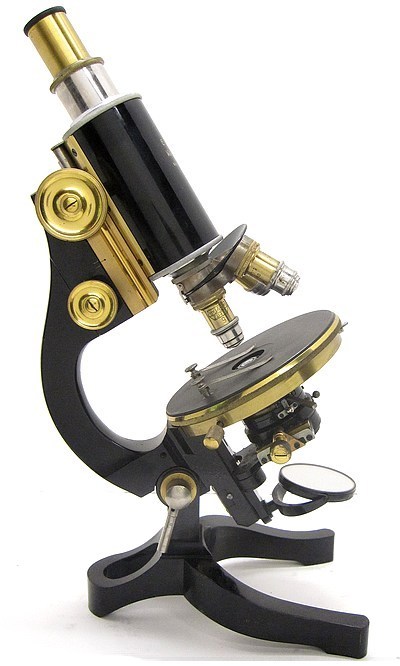
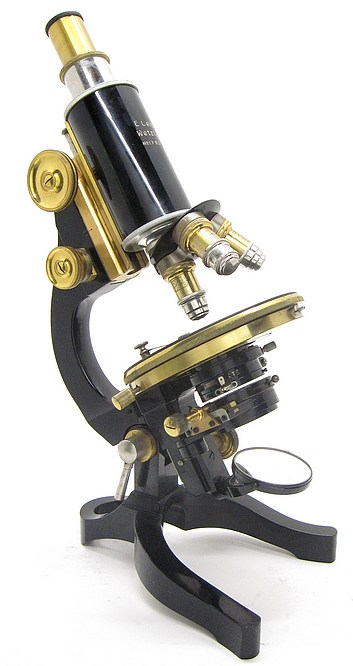
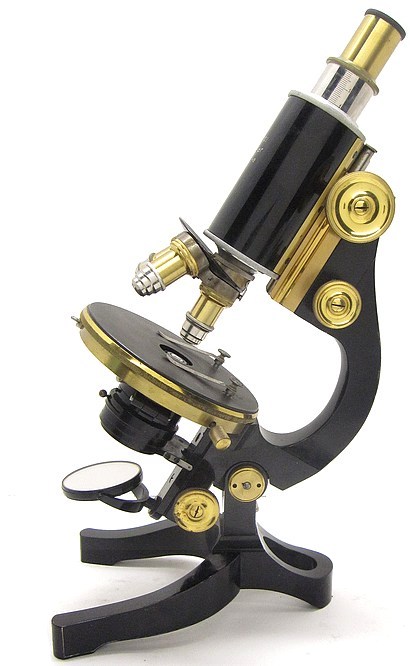
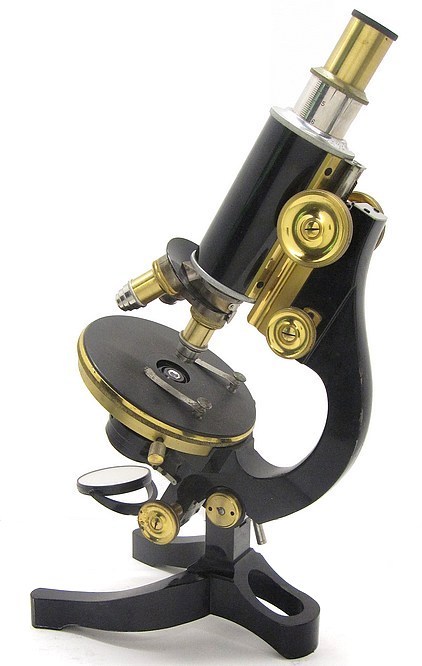
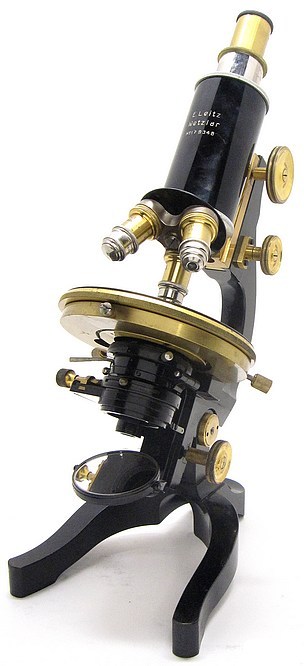
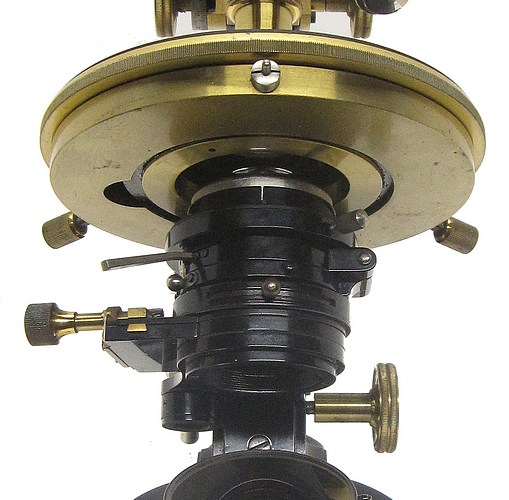
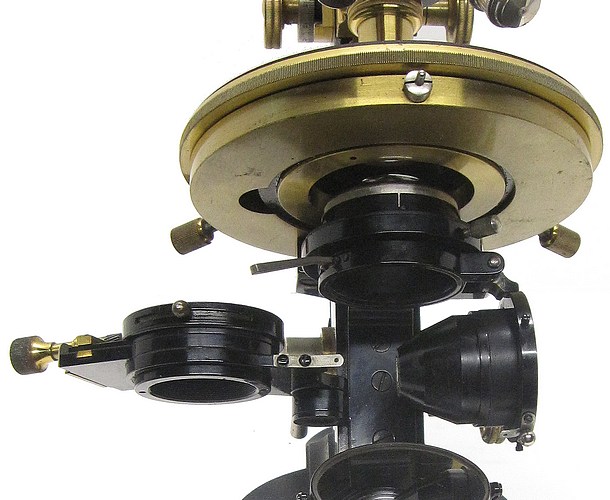
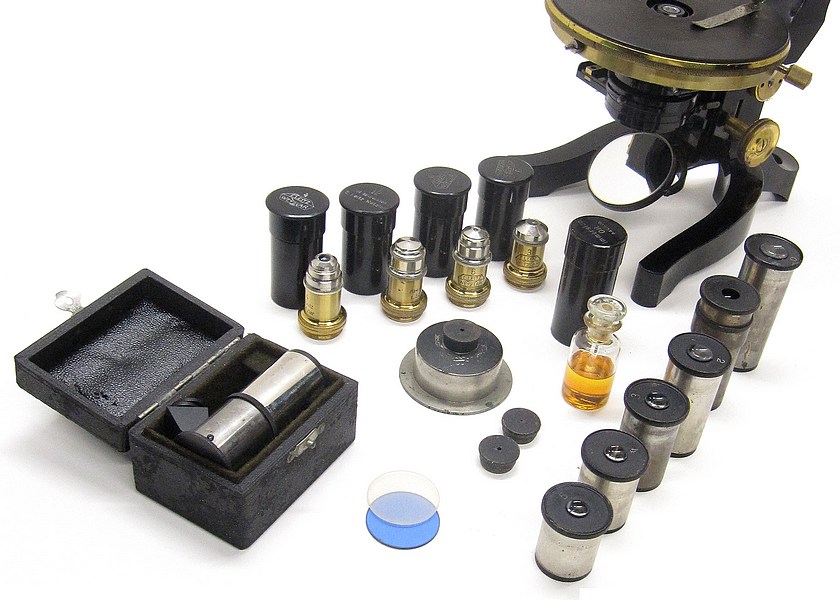
The microscope body is constructed entirely in brass with bright lacquer, black enamel, and nickel-plated finishes. Among the accessories are four objectives, numbered 3, 4, 6, and 1/12 oil immersion, each with a canister; six eyepieces, numbered 0, 2, 3, 4, 5, and 8 (marked compensated); an Abbe condenser; an aperture stop holder with three stops; some colored glass filters; an immersion oil container with canister; and a leather-covered box containing a Leitz ocular camera lucida.
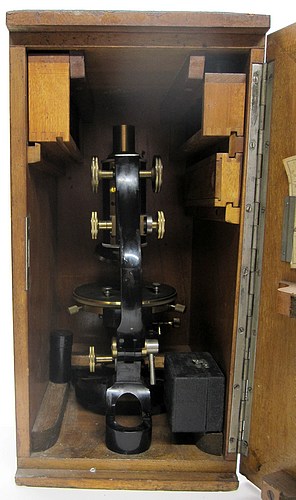
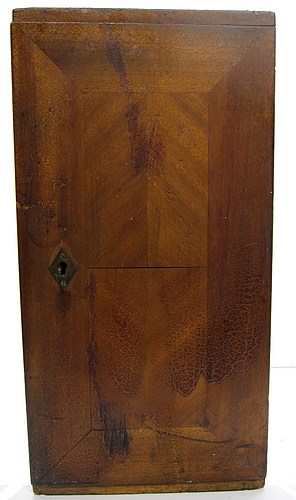
The following was extracted from the 1907 Leitz catalog:
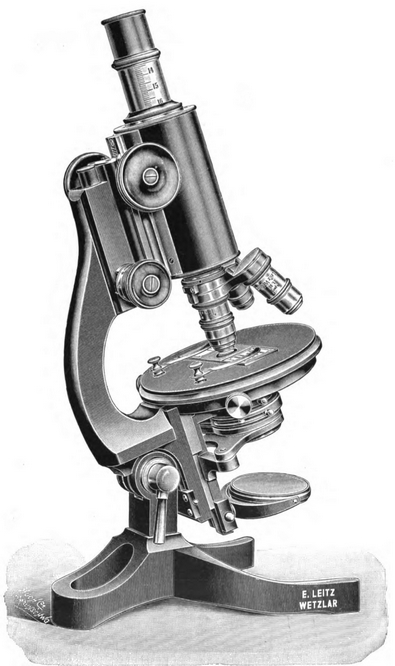
Stand A
Universal Microscope.
No.1. Large Microscope. Inclinable, with hinged joint and clamping lever, circular revolving and centring stage, coarse adjustment by rack and pinion, new continuous safety micrometer movement, (each division = 0.001 mm), wide tube adapted for photography with wide-angled lenses without eyepiece, graduated draw-tube, large illuminating apparatus with hinged condenser and cylinder iris-diaphragm.
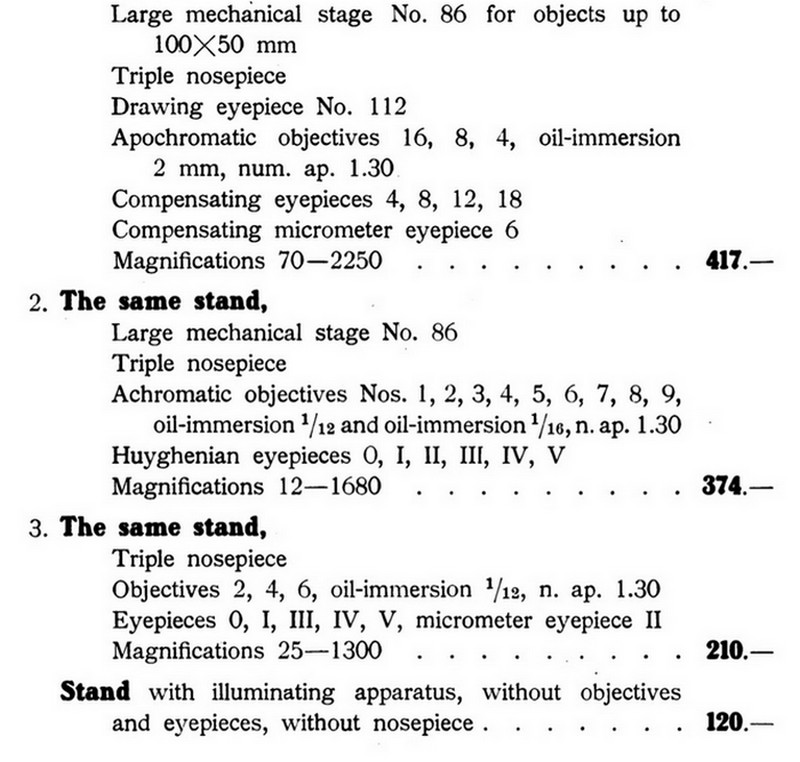
The Leitz Stand A, also called the Universal Microscope, first appeared in the 1903 catalog. With this microscope, for the first time, Leitz abandoned the continental type fine adjustment used with previous models and replaced it with a new fine adjustment mechanism. This mechanism was subsequently incorporated into many future Leitz models. It is described in the 1903 catalog as follows:
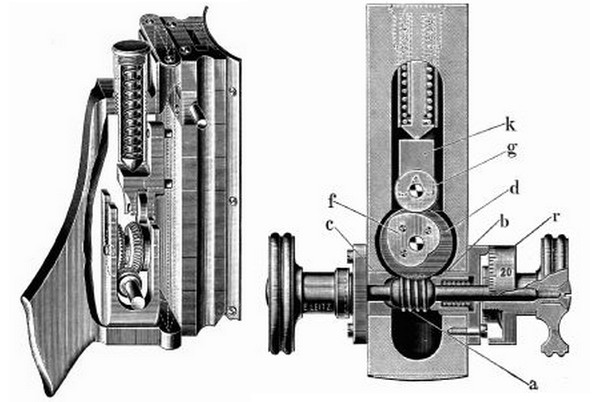
All that can be seen on the exterior are two small milled heads mounted below and somewhat back of the two larger knobs controlling the rack and pinion (coarse) adjustment of the microscope. The knob on the right side is provided with a graduated drum r, indicating the movement of the fine adjustment.
The two knobs with drum are mounted on an axle a, which in its central portion is enlarged and provided with a worm gear. The latter in its turn drives the gear wheel, d. A spiral spring pressing against one of the journals into which the axle is mounted prevents any lost motion in the worm gear. Mounted on the same shaft with the gear-wheel d, is a heartshaped cam f. On this cam rests the steel roller g, fitted on the support k, which in its turn carries the microscope tube. By its weight and a spiral spring the latter presses on the cam f, and effects a direct vertical movement. The periphery of the heart shaped cam f, is exactly symmetrical and mathematically correct. The distance traversed by its curved sides from the lowest to the highest point and vice versa is 3 mm. There are cut 60 teeth in the entire periphery of the gear-wheel d; the number corresponding to one side of the heart-shaped cam or 3 mm elevation, are 30 teeth, therefore 1 tooth means a movement of 3/30 mm or 0,1 mm.
This in turn requires one complete revolution of the axle a, the drum of which is graduated into 100 parts. The value of each division on the drum is therefore 0,1/100=0,001 mm.
This micrometer fine adjustment is exceedingly accurate and reliable, and besides it has the following advantages:
By virtue of its unique construction the movement is continuous, there is absolutely no limit to the motion of the micrometer screw, which may be turned forward or backward as the work requires.
This movement extends in exact ratio to the revolution of the cam for a distance of 3 mm. As another advantage we may mention, that it is almost impossible to break the coverglass of the specimen with this fine adjustment.
Should the objective come in contact with the coverglass and assuming the knob is turned still further then the tube, which is of aluminium and very light would simply rest on the specimen, without breaking the coverglass, as the latter will easily stand the small pressure of the tube and the fine spiral spring.
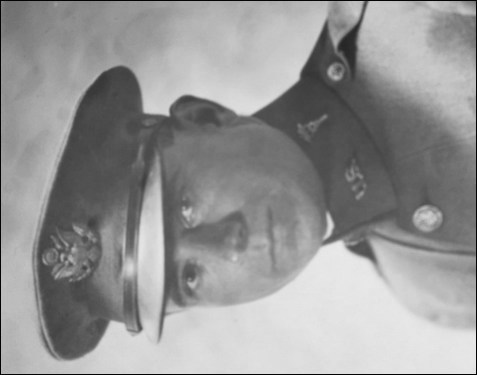
Orlando J. Posey (1889-1968)